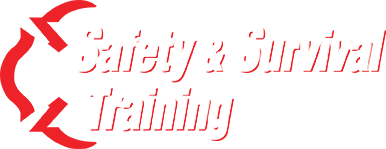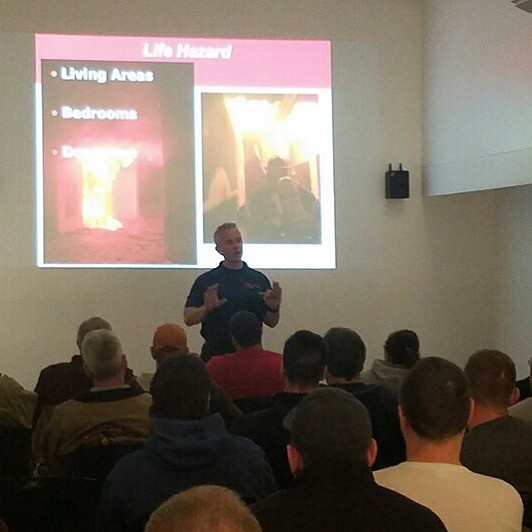Engine Company Officer
3 Hours – Lecture
The Engine Company Officer development program focuses upon the strategic and tactical mindset of the engine company officer. Fire ground decisions made by the engine company officers set the tone for the outcome of the incident and can mean life or death for civilians & firefighters. This program will focus upon decision making skills to be applied by the 1st & 2nd due engine officer on size-up, hose line selection, effective stretches, water supply options, and more.
Ladder Company Officer
3 Hours – Lecture
The Ladder Company Officer development program will focus on the strategic and operational mindset of the 1st & 2nd due ladder company officer. There is a lot of responsibility expected of the ladder company officers on the fire ground from the incident commander. This program will focus on apparatus positioning, search procedures, entry and ventilation decisions along with all the other ladder company expectations on the fire ground.
Fire Ground Size-Up
3 or 6 Hours – Lecture
The successful outcomes on the fire ground depends upon the actions and decisions of the 1st due company officers. The 1st due company officers strategic and tactical thinking along with rapid decision making will predicate how the incident will transpire. This program will cover initial fire ground decision making along with radio reports, defining strategy, initial and on-going size-up skills.
Fire Ground Mayday Management
3 Hours – Lecture
This program will prepare the command level as well as the company level officers for handling and coordinating firefighter emergencies that may be encountered. The fire ground is a dynamic place with constantly changing conditions putting our members at extreme risks. We must know how to coordinate these situations so everyone goes home.
FF Rescue Operations: Command & Control
3 Hours – Lecture
Firefighter Rescue: Command & Control will cover operational procedures to utilize when managing a firefighter rescue operation. Chief & company level officers will learn how to effectively control the scenes where single and/or multiple firefighters are lost or trapped on the fire ground. Incidents ranging from simple to complex along with case studies will be utilized to reinforce the command skills of the students. Command staff will be prepared to handle a fire ground emergency at a moments notice involving our own when time is of the essence.
Strategy & Tactics: Private Dwelling Fires
3 Hours – Lecture
Fires in one & two-family homes account for the majority of structural fires in the United States. More than 70% of civilian injuries & deaths are due to fires occurring in private dwellings. Students attending this program will be able to recognize common characteristics of single & multiple family dwellings and associate their inherit hazards to their tactical and strategic decisions. Instructors will discuss primary company functions and strategic concerns from the engine, ladder & Chief perspective to combat & manage these types of fires that are found in every departments first due response local.
Strategy & Tactics: Commercial Building Fires
3 Hours – Lecture
Commercial building fires can be the most dangerous fires faced by firefighters. With the increased chances of collapse, disorientation and large volumes of fire, company officers and incident commanders need to have a strong knowledge of how to operate within these types of occupancies. The students will learn all things associated with the commercial building fire to better combat these types of fires.
Strategy & Tactics: Mid/High-Rise Fires
3 Hours – Lecture
Fires occurring in high-rise/mid-rise fires have been known to be some of the most difficult fires to not only fight but to command as an array of obstacles are present. This program will focus on the operational deployment of companies to fires in these types of structures from the company officer to the incident commander.
National Incident Management: 100, 200, 300
3, 8, 16, or 24 Hours – Lecture
The National Incident Management System (NIMS) Training Program identifies those courses critical to train personnel capable of implementing all functions of emergency management. These programs establish the NIMS core curriculum to ensure it adequately trains emergency and incident response personnel to all concepts and principles of each NIMS component as it pertains to their level of job performance.
Incident Safety Officer
16 Hours – Lecture
In accordance with the National Fire Academy (NFA) curriculum, this two-day course will examine the Safety Officer’s role at emergency responses. A specific focus on operations within an Incident Command System (ICS) as a Safety Officer is the main theme. Response to all-hazards types of situations will be emphasized.
Building & Delivering an Effective Post-Incident Analysis
3 or 8 Hours – Lecture
There is excellent value to responders on learning from previous incidents whether it be a good or bad performance. Being able to bring together and pass along the positives and negatives of an incident of significance builds a better cohesive team for future incident response for your agency. This program will show the student how to compile the valuable information into a presentation format and how to deliver it in a formal setting to their agency and stakeholders.
What You Write Really Does Matter
2 Hours – Lecture
In this day and age, documentation and report writing are critical. Members of emergency services are accountable for their actions and the only way to accurately document what happened is to know how to document and why you must document. Citizens are watching your actions more than ever and will not hesitate to demand accountability. Therefore, documentation and incident reports will be scrutinized by employers, the public and lawyers. This class will provide insight into properly documenting daily activities, creating reports that can be used in litigation and discuss less formal communication formats like social media that can cause issues for your agency.
Social Media: It is Here to Stay
2 Hours – Lecture
The intent of this class is to provide insight into the rapidly expanding area of social media. Individuals in emergency services and the organizations they represent can use social media to enhance their foot print in the community, but can also damage their footprint in the community with just one post. This class will discuss laws involving social media and provide real life examples of how social media has impacted emergency services. This class will also discuss content for social media policies that should be in place for every emergency service organization
Discrimination and Harassment in Emergency Services
2 Hours – Lecture
This class will examine federal and state laws regarding discrimination and harassment. Real life examples will be used to explain discrimination and harassment. The class will also discuss scope of employment and the responsibilities of every member of your department regarding discrimination and harassment. This class will also discuss parameters for training on the topics and development of policies to address discrimination and harassment.
The Importance of Documentation
2 Hours – Lecture
Emergency service personnel have a number of tasks to complete on a daily basis. One of the most important, but possibly the most tedious is documentation. Documentation can be as basic as logging information about equipment, to tracking training to reporting on incidents. Each type of documentation is just as important as the other because emergency service personnel could have to testify about what was and what was not documented. This course will explain why it is important to document and provide some insight into proper documentation.




